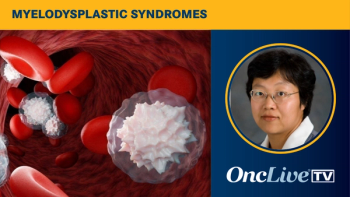
Dr. Daver on the Mechanism of Action of Magrolimab in AML/MDS
Naval G. Daver, MD, discusses the mechanism of action of the investigational CD47-directed antibody magrolimab in acute myeloid leukemia and myelodysplastic syndrome.
Naval G. Daver, MD, associate professor in the Department of Leukemia at The University of Texas MD Anderson Cancer Center, discusses the mechanism of action of the investigational CD47-directed antibody magrolimab in acute myeloid leukemia (AML) and myelodysplastic syndrome (MDS).
CD47 is an immune checkpoint that lies on the surface of macrophages, says Daver. In AML, macrophage suppression and exhaustion are caused by cancer cells that use a link between CD47 and signal regulatory protein alpha.
By blocking CD47 with an agent such as magrolimab, macrophages are not exhausted, explains Daver. Instead cancer cells omit an “eat-me” signal allowing the macrophages to attack.
Magrolimab may have utility across many tumor types. However, preclinical data in immunodeficient mouse models demonstrated prolonged survival and rapid responses with magrolimab in combination with the hypomethylating agent azacitidine, says Daver.
As such, ongoing studies are evaluating the combination in patients with AML/MDS, as well as in patients with lymphoma and solid tumors, concludes Daver.

























































































